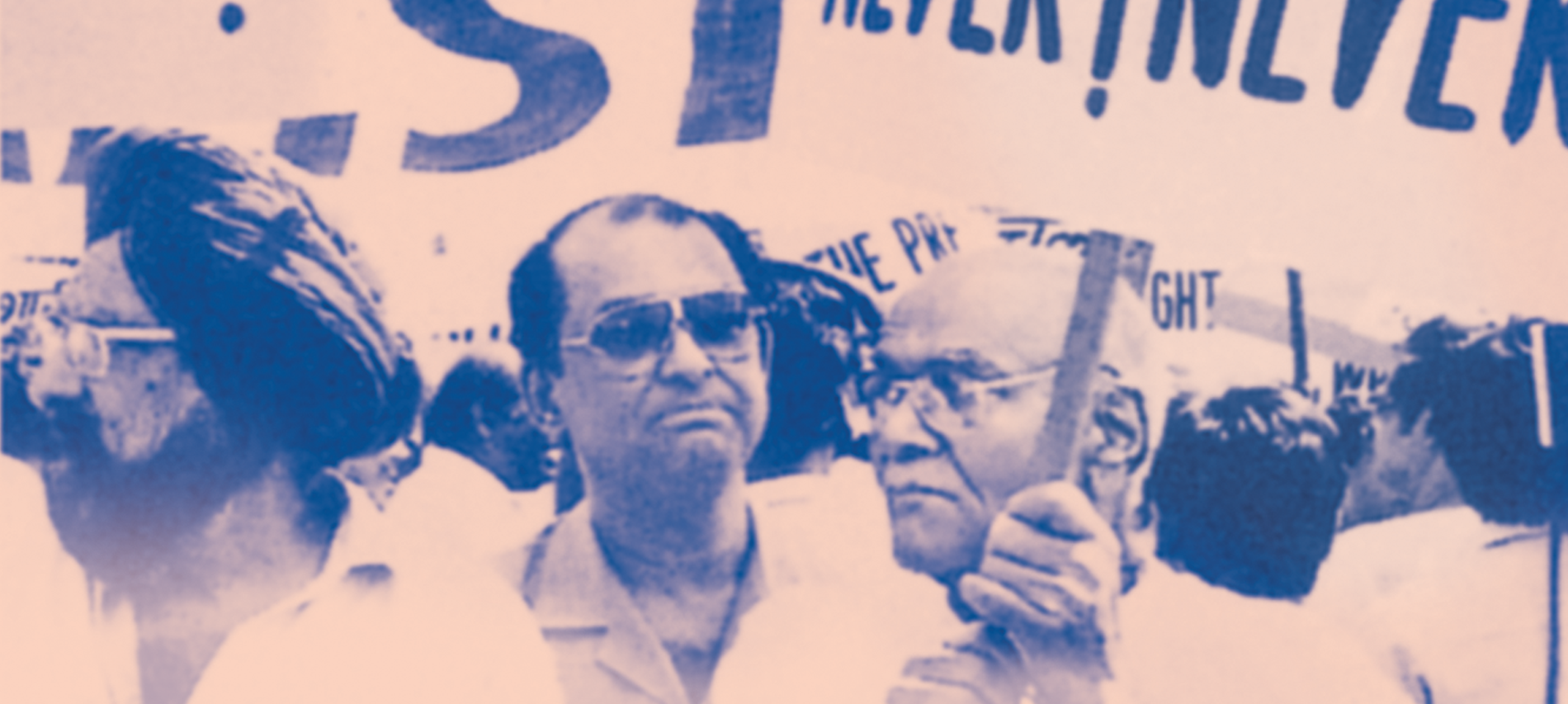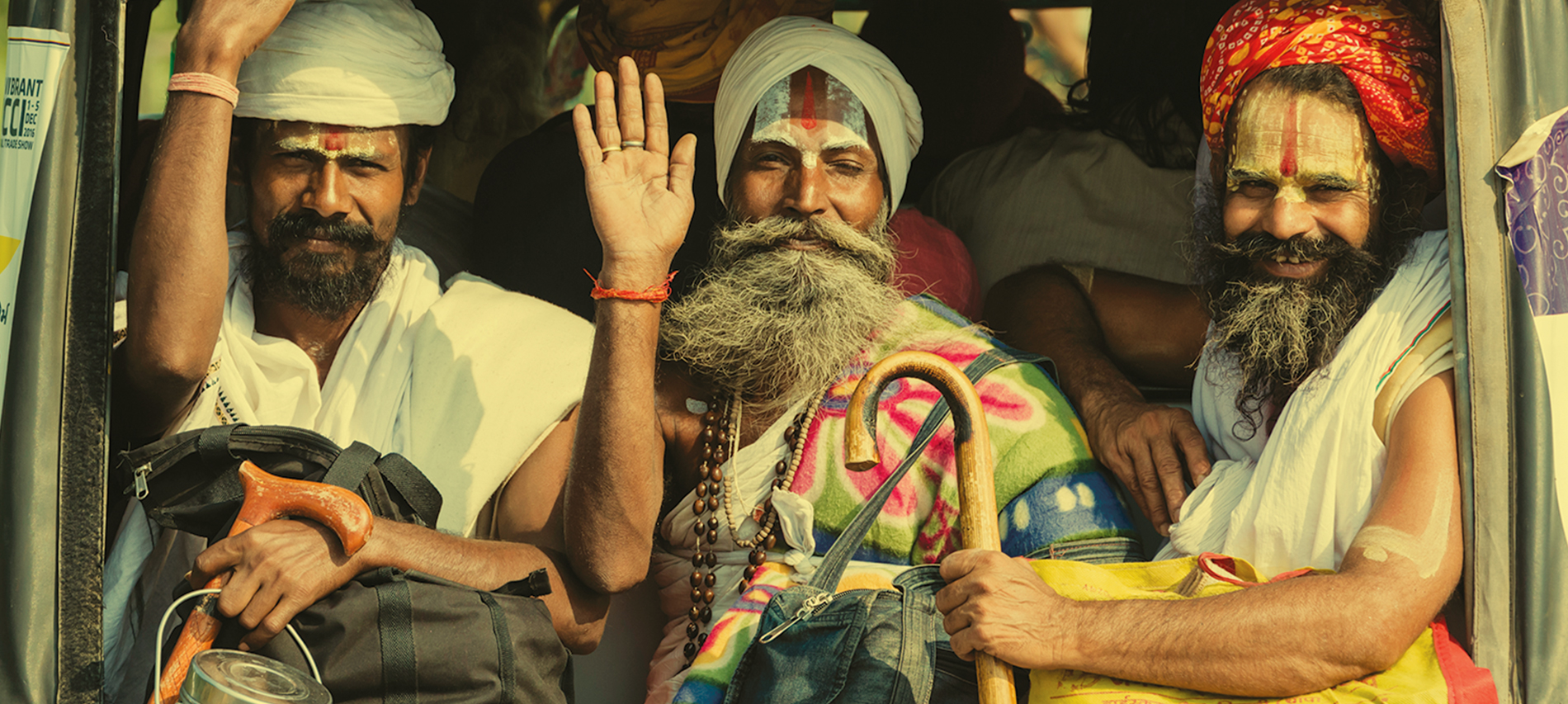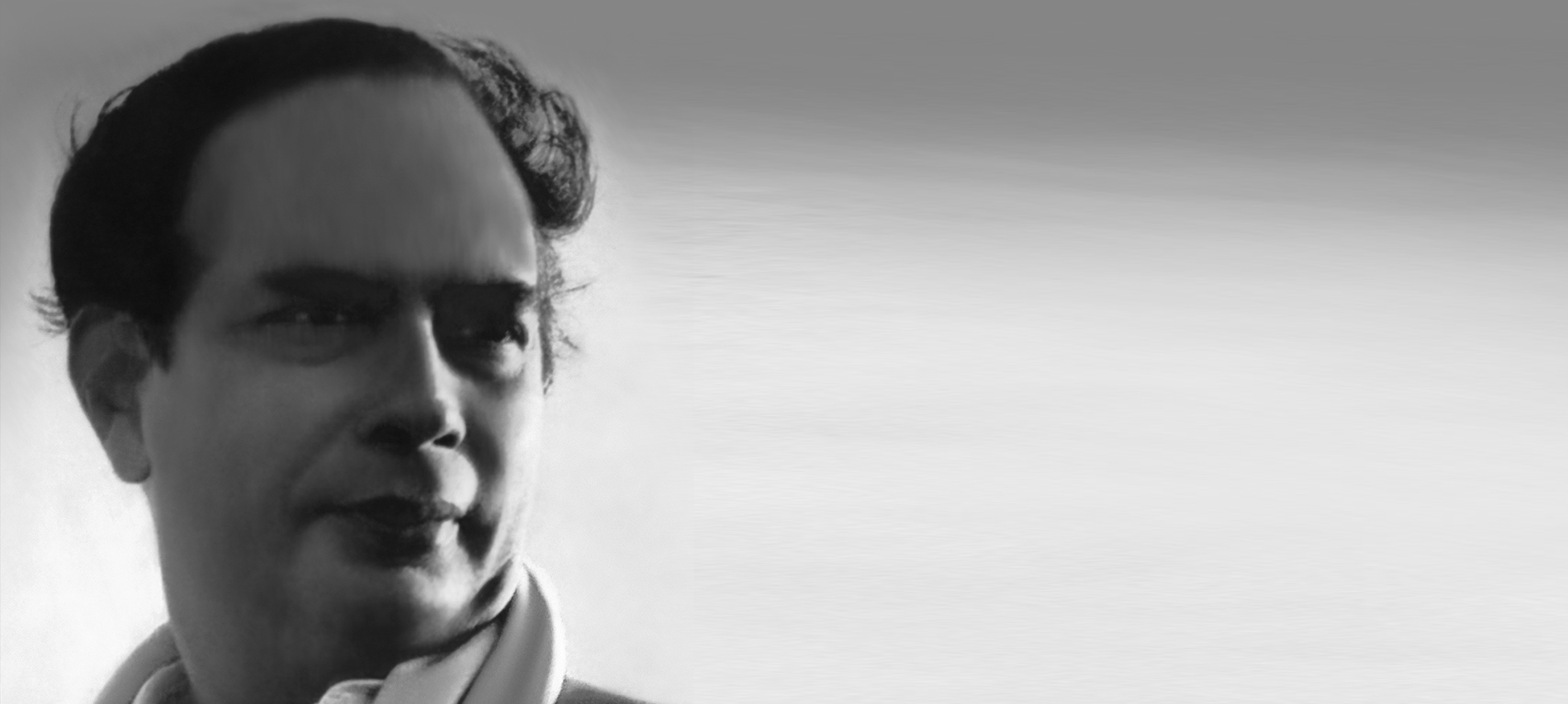Auroville has a reputation as a cosmopolitan, spiritual township, but it remains an enigma to outside observers. This anthology of writing from the community, edited by a long-time resident, Akash Kapur, and representing forty-odd authors from around the world, seeks to shed light not only on Auroville’s ideals but also on its lived reality.
Here are seven facts about Auroville that you should know about:







———-

Tag: featured
6 Times Ramnath Goenka Championed the Cause of Journalism
B.G. Verghese (1927-2014) served with the Times of India for many years before becoming the information adviser to Prime Minister Indira Gandhi. His book, Warrior of the Fourth Estate: Ramnath Goenka of the Express, is a roller-coaster ride through the twists and turns of Ramnath Goenka’s fortunes, including scandals and scoops, fiery public campaigns, dramatic court battles and the making and unmaking of political leaders and governments. Along the way, it tells the story, too, of a newspaper.
Let’s get to know about those 6 times when Ramnath Goenka championed the cause of journalism.
———-





 ————
————

If It’s Monday It Must Be Madurai by Srinath Perur – An Excerpt
Srinath Perur’s writings on travel, science and books have appeared in various national magazines. He lives in Banglore. As much about people as places, If It’s Monday It Must Be Madurai: A Conducted Tour of India is also a reflection on the nature of popular travel today marked by the packaging of experiences, the formation of tourist economies and compulsive picture-taking.
Let’s read an excerpt from this book.
—————–
This is my first time on a conducted tour: eight days in a Tamil Nadu Tourism bus, moving south from Chennai in short hops along the coast to Kanyakumari, and back via Madurai and Trichy. Our tour guide is the industrious Mr N, who will prove ever-willing to provide unscheduled stops at places of religious significance.
I am on assignment for Outlook Traveller magazine along with photographer Jyothy Karat. She and I are by far the youngest of the twenty-one tourists on board. The rest are between fifty and sixty-five years old, many just-retired with ‘settled’ children. The bulk of our group is Telugu speaking—a few couples plus eight or ten members from a single family. There is an immediate division along linguistic lines with all the Telugu speakers forming a solid group. The outliers are Jyothy and I, a Bengali couple and an NRI woman who looks remarkably like Johnny Lever.
The men on the tour have worked in banks and public sector undertakings, one has been a headmaster. The women are mostly housewives. All this is revealed in a ‘self-introduction’ session organized by Mr N after we leave Chennai. We take turns to lurch up to the mike at the front of the coach to state—Mr N is always exact in his directions—‘name, place, what you are doing, and designation’. The men, to a man, speak for their wives. The Bengali gent delineates his identity in three crisp sentences: ‘I am from Calcutta. I am a Bengali. I am a retired government servant.’ Ms Lever says, ‘I’ve left my husband and come to tour India.’ The other women burst into applause, as eloquent a self-introduction as any. They also proceed to ignore Ms Lever for the rest of the tour.
Mr N has been a tour guide for close to twenty years, and he knows his flock eerily well. He’s brought along a stool that acts as a much-needed additional step while boarding the bus. He declares ad hoc restroom breaks that always have grateful takers. If he announces a medical shop, there are always people who’ve run out of their pills. It had struck me as odd that he specifically asked us to mention designation while introducing ourselves, but a day into the tour I’m beginning to see how much it matters. The headmaster is not simply a teacher, the Regional Manager did not just work in a bank. The official persona still lingers about the men, and travel takes the aspect of an inspection tour. ‘How was the food?’ one man asks me after lunch. I tell him I enjoyed it; what did he think of it? He grimaces and shakes his head: ‘Not up to the mark.’ Every aspect of the tour is up for comparison and assessment over the next week: food, the coach, rooms, the driving, sunsets, temples, even the gods.
In the bus I sit at a window seat near the back. The Regional Manager takes the aisle seat in front of me, reclines his backrest, and asks through the gap, ‘What do you write about?’ I tell him. ‘Economics is more interesting,’ he says, and embarks on an epic monologue. I learn, among other things, that the national savings rate is down from 23 per cent to 21 per cent and that the high point of RM’s professional life involved seeing the Allahabad GM pulled up for dozing off in a training session. I make strategic seating choices for the rest of the trip, but am cornered in various other places. One morning after breakfast RM comes up to me and points at Jyothy, who is taking pictures in the distance. ‘I have thought of a poetic name for your friend,’ he says. ‘She is Lens Lass.’
Lens Lass is less than half the age of the next youngest person on the tour (myself excepted), and realizes right on Day 1 that this tour may not have much to offer by way of fun. On the first evening of the tour we go boating in the mangroves of Pitchavaram, down the coast from Pondy. Seven of us in one rowboat, the ride is proving sedate, even somnolent, when the headmaster cries out to the boatman, ‘Slow! Slow!’ LL confesses she is feeling trapped. It doesn’t help that Ms Lever is developing a motherly crush on her, and even attempts to create a rift between us. LL is advised to be wary of me: ‘He appears to be a good person, but in this world you never know.’
————-

5 Things You Didn’t Know About James Patterson
James Patterson is one of the widely renowned name in the field of literature. From adults to children, Patterson writes for all. He is best known for his thriller novels, especially his Alex Cross series. He is the first author to feature simultaneously on the New York Times children and adults bestseller list.
Here are 5 things you didn’t know about the man behind the eminent novels:





The Black Economy in India by Arun Kumar – An Excerpt
Arun Kumar taught economics at the Centre for Economic Studies and Planning, Jawaharlal Nehru University, Delhi, till 2015. He has a master’s degree in physics from Delhi University and Princeton University, USA, and a doctorate in economics from JNU. A ground-breaking book, The Black Economy in India in India shows how demonetization is not the way to end the black economy, since what India needs is to empower citizens and make leaders accountable.
Here’s an excerpt from the Prologue.
—————
The black economy is once again in the news because of the announcement of demonetization of the large-denomination currency notes. It is not that this is the first step that the present government has taken to tackle the black economy. It started its journey by forming a special investigation team (SIT) under a Supreme Court order in 2014. It has got the approval for many bills, for example, on Benami Property, Black Money held abroad and Income Declaration Scheme. But none of them had the same dramatic impact on the economy since they were not comparable in order of magnitude that demonetization is.
The present move will not be able to tackle the black economy but has the potential to devastate the economy. The impact on the poor, the farmers, workers and producers in the unorganized sectors has already been severe. Thus, it is impacting those who never generated black incomes or held much of the high denomination currency notes. According to reports, much of the high-denomination notes issued by the RBI are coming back into the banks. The implication is that those who held substantial black cash have managed to exchange their old notes for new ones. Thus, the culprits who were supposed to be punished by the demonetization have escaped while the innocent have been trapped into standing in queues or by unemployment.
The prime minister promised normalization in fifty days but that cannot happen since so much currency cannot be printed in such a short time. Not only will the currency shortage continue due to insufficient printing capacity but those with black money are first replenishing their coffers causing a shortage of cash available to the public. Further, hoarding is going on. Thus, the economy would suffer for much longer and irreversibilities have already set in, pushing the economy towards a recession.
All this happening in the context of the black economy has again brought this topic to the centre stage. Public curiosity/ awareness of the issue has suddenly increased by leaps and bounds. It is in this context that this book with a new prologue is being issued at this juncture. The prologue discusses the different remedies to tackle the black economy that have been attempted by the present government. It must also be said that the theoretical framework of the book remains as valid today as it did in 1999. In fact, there is a section on demonetization in the book which had argued against taking such a step for precisely the reasons that are playing out today.
—————

Things you should know about one of India’s Foremost Functional Trainer – Shivoham
A former professional swimmer and water polo player, Shivoham has trained many Bollywood actors who swear by his diet and workout regime. One of India’s foremost functional fitness trainers, Shivoham in his book, The Shivfit Way: A Comprehensive Functional Fitness Programme, outlines the eight basic movements of all exercises that will help you achieve a strong body and ensures you meet all your fitness goals.
Here are a few lesser known facts about this phenomenal trainer.
————————-



 ————-
————-

Listicle: 6 exercises to get you warmed up for functional fitness
Shivoham is the trainer behind Aamir Khan’s muscular look in Dhoom 3, Sonakshi Sinha’s bodacious curves in Dabangg, Jacqueline Fernandez’s lean physique and Abhishek Bachchan’s fitness. His book, The Shivfit Way will ensure that you won’t just get back in shape, you’ll also look forward to working out. The book is co authored by Shrenik Avlani, who is a newsroom veteran with nearly two decades of work experience as a leading writer in the field of endurance sport and fitness.
Here are 6 warming up exercises from the book that get you warmed up for functional fitness.






Do these seem helpful?
Get your copy of The Shivfit Way: A Comprehensive Functional Fitness Programme and start working on your fitness goals.

5 Facts about the Landmark Cases of Modern India that will Blow Your Mind
The Dramatic Decade: Landmark Cases of Modern India, is a collection of some of the landmark cases of Modern India that have impacted the collective conscious of the entire nation.The book gives the reader a ringside view of what happened both inside and outside the courts.
Let’s take a look at these facts.
1. The Parliament Attack – 13 December 2001
2. Nirbhaya – 16 December 2012

3. The 26/11 Mumbai Attacks – 26 November 2008

4. The Babri Masjid Demolition – 6 December 1992

5. The Uphaar Tragedy – 13 June 1997
 ————
————

Ashoka in Our Time; An Excerpt
Bruce Rich is an author and lawyer who has worked with major US environmental groups as well as with international organizations over the past three and a half decades. His book, Ashoka in Our Time: The Question of Dharma for a Globalized World, offers a compelling critique of the forces of globalization that, while connecting the world in unprecedented ways, have deprived us of a unifying dharma. Rich looks for answers to contemporary issues in the paradoxes of Ashoka’s empire, as well as in the ideas of thinkers from across the ages.
Here’s an excerpt from the new preface of this exemplary book.
————————-
This book was first published in India in early 2008, months before the full magnitude of the global economic crisis became apparent. The severity and unexpectedness of the crisis only accentuated for more and more people the realization that a global economy requires a global ethic. A global order that one-sidedly prioritizes unbridled market forces over other social values has created a profoundly unstable world, a world where the viability of whole societies, nations and democracy itself can be put at risk. As economies slowly recovered and stabilized, the global and local structures of political economy reflecting this order have intensified economic inequality, social insecurity and the dissolution of traditional communities. The reaction in many societies worldwide has been a growing quest for identity, community and justice, an evolution that holds great promise but also great menace. Our world is nearing a juncture where every citizen may be faced with a choice between embracing a more pluralistic, open, ecumenical social and political ethic or a flight into reactionary nationalism, ethnic and religious fundamentalism, and a futile embrace of authoritarian pseudo-solutions.
In researching and writing this book over a decade ago, I sought to better understand the challenges facing our present age by examining the ethics and governance of one of India’s—and humanity’s— archetypal figures, Ashoka. The Maurya Empire of Ashoka’s epoch was a multi-ethnic realm with a multitude of differing religious and philosophical beliefs, including even in some cases sects espousing an agnostic or atheistic materialism. Ashoka’s ethic of Dharma embodied public values that would enable the inhabitants of what was then the world’s largest empire to live and prosper together in a time of social and economic change.
This book begins with what in 2008 was a timely vignette on the world geopolitical scene: a reference to the fundamentalist violence in Afghanistan and the violent reaction it provoked through the invasion by the US and allied troops, in poignant contrast to the peaceful, multicultural polity reflected in the Ashokan inscriptions one can still see in south-eastern Afghanistan. I never thought we would be witnessing an exacerbation of almost exactly the same situation in 2017, including a recent increase of US troops in Afghanistan to attempt to deal with similar threats. Over the past decade, ethnic and sectarian violence has proliferated, with destabilizing effects that ripple out across the globe. The conflict in Syria and the persecution of a Muslim minority in Myanmar—a country whose Buddhism long ago was inspired by Ashoka—are just two of the many symptoms of a humanity that is globalized and tearing itself apart at the same time.
Nor would I have imagined that in major countries all over the world we would witness a growing resurgence of nationalistic, xenophobic and, in some cases, outright neo-fascist political movements. This reaction to the social effects of one-sided economistic market fundamentalism was astutely examined by Karl Polanyi over seventy years ago.
The global environmental crisis has only accelerated as evidence of climate change is increasingly visible. Like the inequalities and imbalances in the global political economy, climate change also can only be addressed by concerted action that prompts changed economic priorities and values in every nation and community on the planet.
In short, what we witness around the world is a search for what might be called a unifying ideology of ‘dharma’. This is the dharma that Ashoka sought, a concept or construct of ethics, law and community which establishes guiding values for individuals and society.

Bimal Roy: The Man Who Spoke In Pictures; An Excerpt
Rinki Roy Bhattacharya has cinema in her veins, daughter of Bimal Roy, she married Basu Bhattacharya and collaborated on his films. Her book, The Man Who Spoke in Pictures, shows Roy’s spare storytelling and nuanced understanding of the human condition that are reflected in classics like Devdas, Sujata and Madhumati. In this book, his Bombay years are recorded through a collection of analyses and anecdotes from leading literary and cinematic luminaries, including Nayantara Sahgal, Gulzar, Naseeruddin Shah and Khalid Mohammed.
Here’s an excerpt where Shashi Kapoor reminisces his fondest memories of Dada.
———————————————
I was little more than a boy when I first met Bimalda. I think it was at a movie premiere that we first met. He was a soft-spoken gentleman and I still remember his interesting eyes. By 1959, I was on my own with a small family and urgently in need of work, and of course, money.
We met again at a dinner at the Ritz Hotel in Churchgate. The Filmfare magazine had organized a talent contest; I did not go for the contest but went to the dinner later. I had to borrow a Jodhpuri coat for the occasion from Tiger (the Nawab of Pataudi). Within a week of this meeting I got a message from his company, Bimal Roy Productions, that he wished to meet me. I rejoiced at this news and literally flew to meet Bimalda at Mohan Studios.
Many of his assistants had assembled outside his room. Amongst them were Hrishida, Basu, Raghunath Jhalani and S. Khalil. They informed me that Bimalda was going to start two new films Bandiniand Prempatra (a remake of the successful Uttam–Suchitra Bengali film Sagarika). They suggested that I choose Prempatra as it had a good romantic role. For me, there was no question of choosing. Uppermost on my mind was the irresistible longing to work with Bimalda. Finally, I stepped into his room. He was having a quiet smoke, and after a long silence he said,‘Shoshibabu, ek picture banayga. . . I want you.’ I said, ‘Yes.’ Since that day when I first met him, I knew we liked each other. I was young, eager and excited at the prospect of working with Bimal Roy.
When I came out I met his assistants, all still sitting outside the room. They were curious to know. Gulzar asked me, ‘What happened?’ I said: ‘Dada is asking for dates.’
‘For which one?’ they asked me. I said I did not know. Dharam (Dharmendra) was also waiting outside Bimalda’s room. After almost a month we heard that Dharam was to be cast in Bandini while I was selected for the romantic lead in Prempatra. One day Bimalda asked me how much money I expected. I, quite frankly, felt awkward about talking money with him. He sensed my discomfort and said, ‘All right, tell me how much money is B. R. Chopra Productions paying you?’
‘Twenty-five thousand,’ I answered.
He was surprised and asked, ‘Are you sure they will pay you so much?’
‘Yes, they are pretty big producers,’ I replied
‘All right,’ he said. ‘I will pay you the same.’
Then shooting for Prempatra started. Bimalda, being the shy person he was, had forgotten to introduce me to Sadhana, the heroine. It was also her big film. So we introduced ourselves. I realized that whenever Bimalda was pleased with me, I would get to share his tea—special tea made and served by his man Friday, Ganpat. I was very proud to share his tea. Later, during the filming of Benazir, Meenaji was also invited to share his tea. We were both pleased by Bimalda’s affection for us.
I must tell you about another interesting incident. I was going to England in 1961 and Dada wanted some ambience shots taken in London for Prempatra. I was touched by the incredible faith he showed in me. He explained that due to the economic constraints and tight shooting schedule of Bandini he could not go to London. He explained the required shots and made me write them down, gave directions explaining the shots in detail. I protested, ‘Dada, but I have never shot a film.’
He simply said, ‘I know you can do it, I have seen you on the sets and know you can do it. My man in London will contact you, organize the camera but you take your own shots.’
‘All right, if you say so,’ I replied. We took the shots and some of them were used in the film.
Prempatra did not fare too well at the box office. That made Bimalda feel guilty, I do not know why, and whenever we would meet socially at premieres or other places, he would say, ‘Phirse tumko lega, hum ek saath kaam karega. . . you are one of us at BRP.’

















